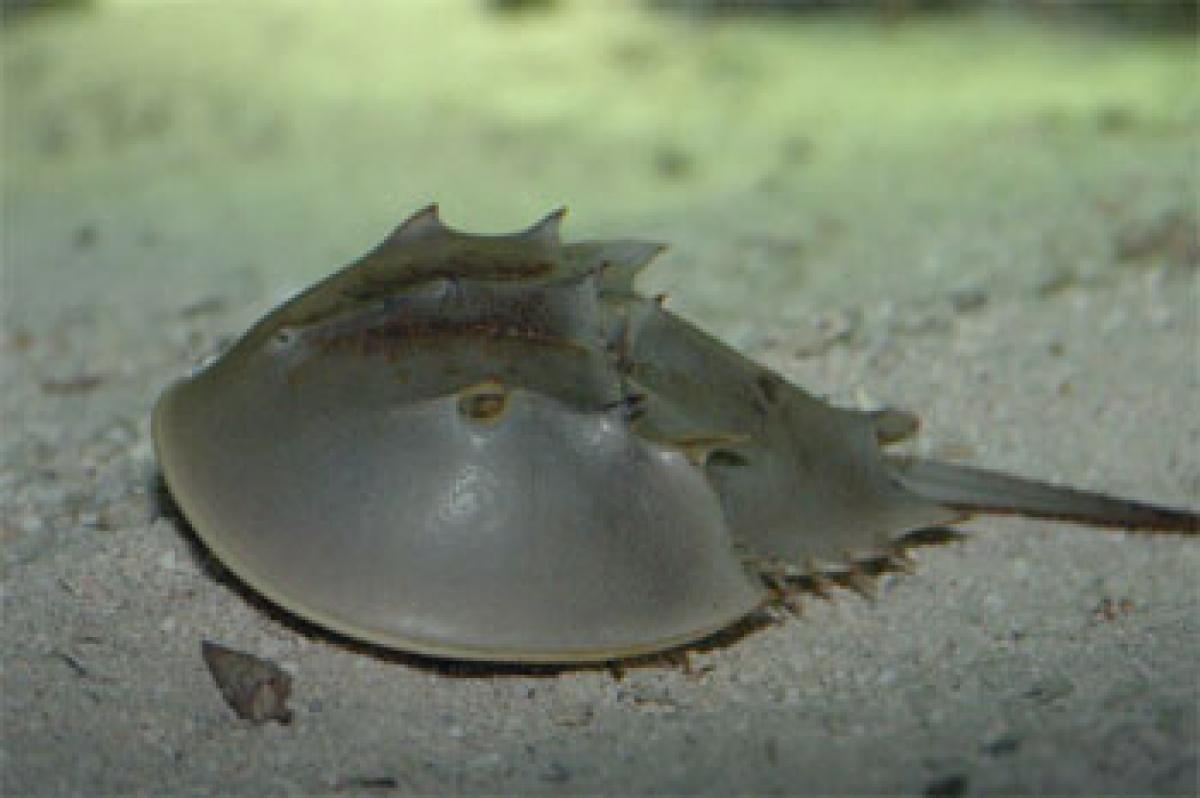Live
- G20 Leaders Will Talk About Climate, Taxes, and Trump's Return in Brazil
- COP29: CDRI announces $8 million funding for 12 projects to address climate crisis
- Anti-Telgu remarks: Actor Kasthuri Shankar moves court for bail
- Samsung AR Smart Glasses Set to Launch in 2025, Featuring Ray-Ban Meta-Like Design
- Kerala Industries Minister confident that new policy will boost plantation sector
- Madras HC plans inter-departmental monitoring committee to combat drug use in TN
- Bihar: Spotted deer dies due to heart attack in Banka district
- Mushtaq Ali T20: Shami to spearhead Bengal bowling attack, Gharami named captain
- Kharge's clarion call to oust Maharashtra's BJP-backed MahaYuti
- Why Ukraine’s Use of US Missiles Against Russia Could Lead to World War 3
Just In

x
Highlights
Population of horseshoe crab, the endangered species that exist in the Bay of Bengal, is dwindling due to lack of knowledge on their conservation among fishermen.
- Fishermen consider it as non-food item and fail to release them into sea
- Crab proved to have excellent antibacterial nature
- Scientists got three Nobel prizes for research on the crab
.jpg) Nellore: Population of horseshoe crab, the endangered species that exist in the Bay of Bengal, is dwindling due to lack of knowledge on their conservation among fishermen.
Nellore: Population of horseshoe crab, the endangered species that exist in the Bay of Bengal, is dwindling due to lack of knowledge on their conservation among fishermen. Though the crabs, known for their high medicinal values, are often available off the Chennai coast, fishermen treat them as dangerous creatures in many areas of the district.
The horseshoe crab is a marine arthropod of the family Limulidae and live primarily in and around shallow ocean waters on the soft sandy or muddy bottoms.
The helmet-shaped creature has developed a unique defense to compensate for its vulnerability to infection in shallow waters with remarkable antibacterial properties.
The horseshoe crab, Limulus polyphemus, is a versatile model for scientific research. Scientists in a wide variety of fields, including ecology, microbiology, biotechnology, pharmacology, immunology and neurophysiology, have focused their investigations on this extraordinary marine creature.
Now, the existence of this creature is in jeopardy since investigations have been focused on its strong blue blood how it works as a powerful antibacterial nature.
Researchers in several countries have discovered that a protein extracted from Limulus suppresses the spread of the HIV virus when linked with various peptides.
They are now developing and testing applications that could result in an AIDS vaccine, and have obtained some promising results too.
But, fishermen in the coastal areas have no knowledge about these creatures and simply throw them on the shore thinking they are dangerous and not fit for human consumption.
The lifespan of these crabs is about 25-30 years and they attain sexual development for breeding at the age of 8 or 9. Female crabs grow longer by 30 percent and they dig a hole and deposit as many as 20,000 pearly green, birdshot-seized eggs.
“Nellore coast is also witnesses these crabs during some seasons but fishermen have no knowledge on their conservation. The medical professionals use an extract from the horseshoe crab’s blue blood, known as lysate to test the purity of medicines.
Some properties of this crab’s shell are being used to speed blood clotting,” said V Ram Krishna from fisheries department.
In the biomedical industry, horseshoe crabs have been used in eye research, the manufacture of surgical sutures, and the development of wound dressings for burn victims.
For over fifty years, the eyes of horseshoe crabs have been used in eye research. The crab's lateral compound eye has shown scientists a great deal about how the human eye functions.
This has enabled scientists to analyze the electric signals that send visual information to the brain, and therefore to understand many underlying principles of all visual systems, say ophthalmologists.
Interestingly, three Nobel Prizes have been awarded to scientists who investigated the crab’s physiology to gain insight into human health. Pitiably, researchers found that 10-15 pc of crabs fail to survive during the bleeding procedure for laboratory studies that accounts for around 20,000-30,000 per annum.
“We are trying to inculcate an idea on its significance in medical research during interaction with them as part of protection measures.
But, they cannot understand and were not practicing releasing them safely into Sea,” said a senior official from the Central Institute of Fisheries Technology.
By:P V Prasad

Next Story
More Stories
ADVERTISEMENT
© 2024 Hyderabad Media House Limited/The Hans India. All rights reserved. Powered by hocalwire.com







